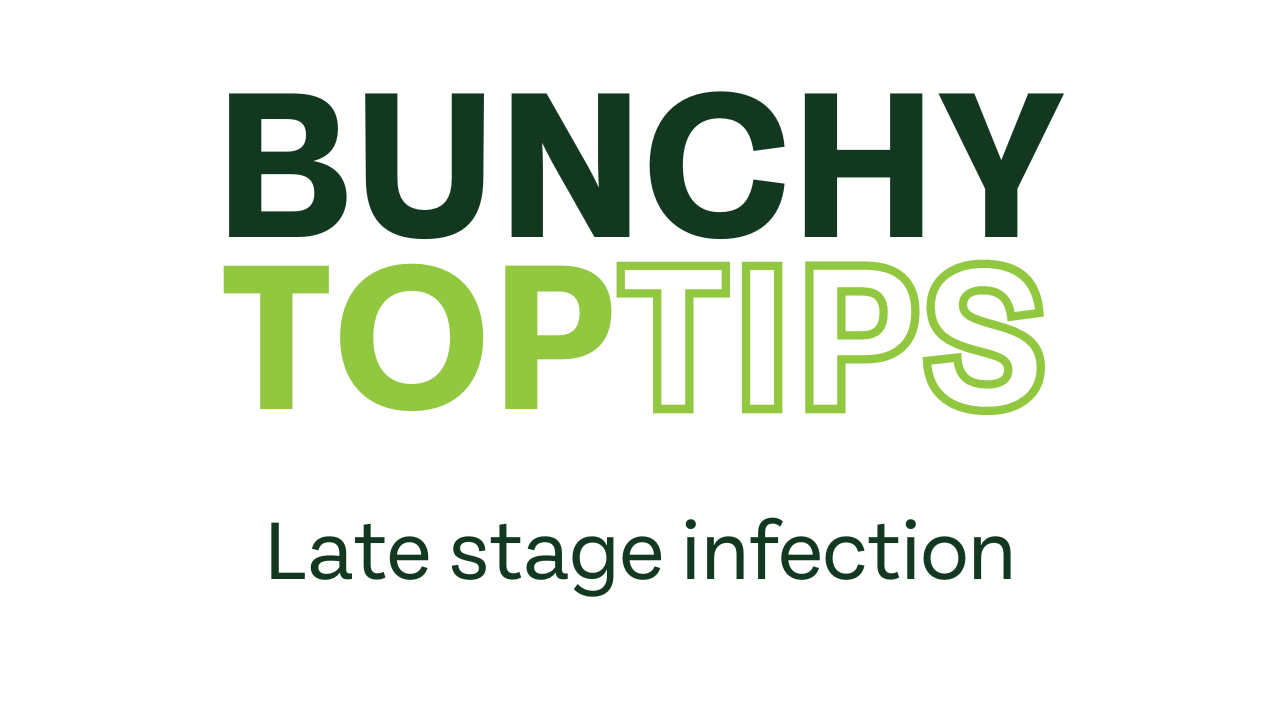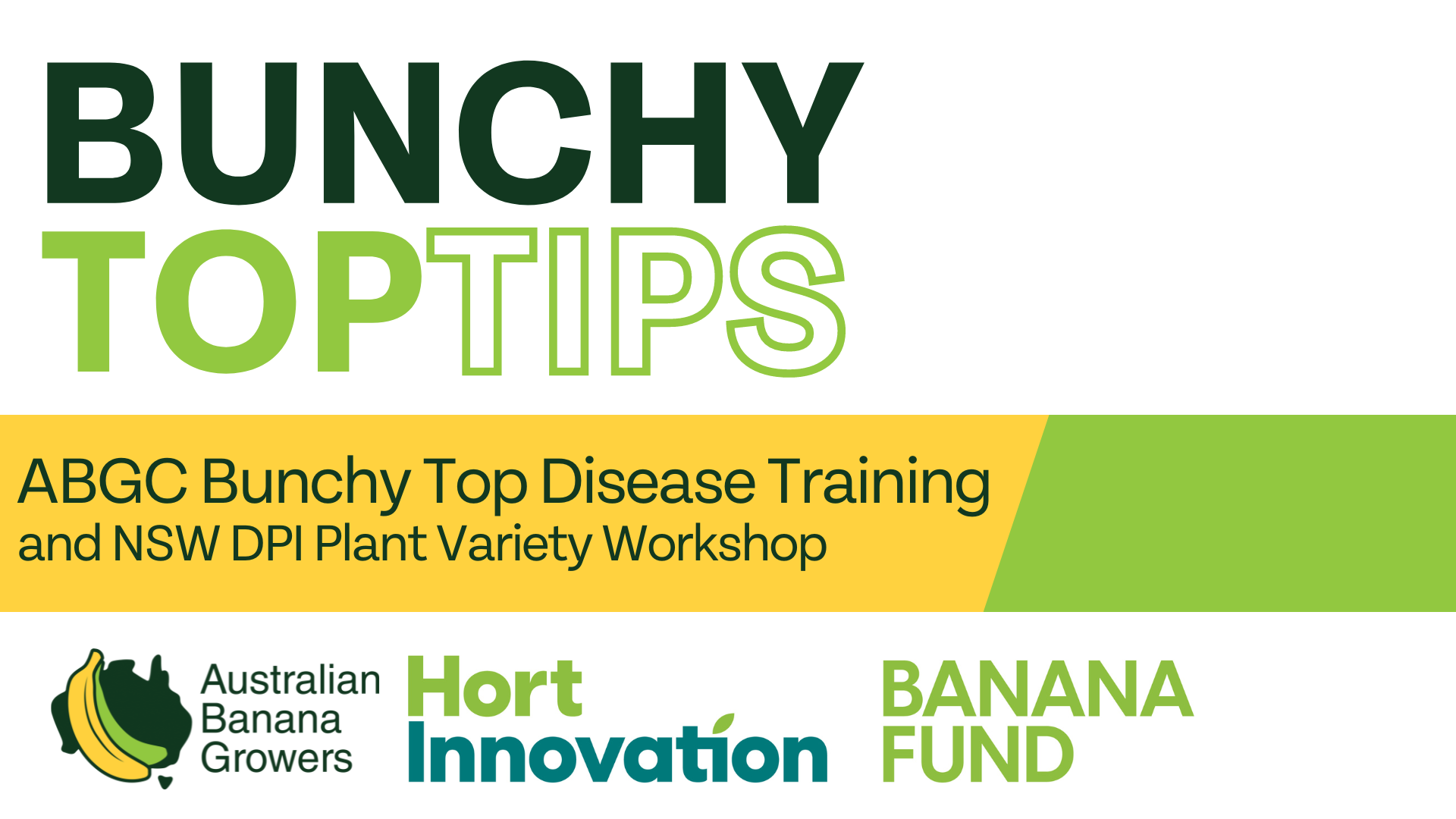Banana Bunchy Top
The National Banana Bunchy Top Virus Program
The National Banana Bunchy Top Virus (BBTV) Program, part of the Hort Innovation ‘Multi-pest surveillance and grower education to manage banana pests and diseases Project’ (BA21003), began on July 1, 2022 and operates in South East Queensland and Northern New South Wales. It is run by the Australian Banana Growers’ Council and funded by banana grower levies through Hort Innovation.
Key Contacts
Bunchy Top Hotline: 1800 068 371
ABGC: [email protected]
NSW DPI: 1800 084 881 or [email protected]
QLD DAF: 13 25 23 or [email protected]u
The Bunchy Top Project Team
Grant Telford
Project Manager
Wayne Shoobridge
NSW Team Leader
Samantha Stringer
Operations and Extension
Josh Chapman
Bunchy Top Inspector
Amardeep Singh
Bunchy Top Inspector
WHAT IS THE BANANA BUNCHY TOP VIRUS?
The Banana Bunchy Top virus is the most devastating viral disease found in banana plants worldwide. It poses a major threat to Australia’s commercial banana industry and home-grown bananas also.
Bunchy Top Virus has been in Australia for more than 100 years. While it has not been eradicated, it has been contained and it is only found in a small part of Australia. To help prevent further spread we encourage growers of banana plants to monitor their plants and if they suspect Bunchy Top Virus may be present to contact the BBTV inspectors or their relevant state primary industry authority for further assistance.
Bunchy Top Tips

3.31

2.09

2.01


TIP: DO NOT DISTURB!
If you think your banana plants may be infected with Banana Bunchy Top Virus, seek more information first before disturbing the plants. Chopping off the plants will not destroy the virus and may cause further spread. Future emerging suckers will also be infected with the virus if not treated correctly.
What does Banana Bunchy Top Virus look like?
In its early stages, the symptoms are difficult to see to the untrained eye. The first symptom is short dark dot-dash lines appearing along the veins of the youngest leaf starting from the mid-rib. You can see the dot dash lines best when you look upwards towards the sunlight through the bottom side of the youngest leaf. Dark green stripes running along the mid-rib of the infected leaf may also be present. When the disease is more advanced each new leaf becomes shorter, narrower and stands more upright giving a bunched-leaf appearance, that is why it is called Bunchy Top. Plant growth is stunted and the leaf edges roll slightly upwards and tend to become yellow or lighter green. Bunches can become small and deformed also. All varieties of bananas are susceptible.
How is it spread?
Banana Bunchy Virus can only be spread in two ways:
1: By the banana aphid, a small black insect which looks like other aphids you see in your garden, but only the banana aphid can spread Bunchy Top Virus, after it has fed for many hours on an infected banana plant. All banana plants may have banana aphids, but not all aphids are carriers of the disease.
2: By the movement of infected planting material. Well-meaning people who give away young plants or suckers to neighbours or friends risk spreading the virus. Please do not move plants on or off a property, and only access clean planting material from an approved source. Both the Queensland and NSW state governments have legislative rules around the movement of banana plant material. So, If you would like to access some banana plants, they are available at approved nurseries and shops. Please contact your state primary industry authority to find out where they are available.
WHAT CAN I DO?
To verify if your banana plants have Banana Bunchy Top Virus symptoms, please call, text or email our inspectors or your state primary industry authority, and if possible provide some clear pictures showing the overall plants and some close images of the sicker leaves (with the sun shining through them if possible). An assessment can be made, and if necessary, and inspection can be arranged for your property. If the virus is detected in the plants, they will never recover and will need to be destroyed. This is done by first over-spraying the plants with a non-toxic paraffinic oil to prevent the aphids from moving onto another banana plant, and then by injection of a herbicide to destroy the plants. Other non-chemical methods are available if need be (but this is much harder work).
This project is being funded by Hort Innovation using the banana industry levy and funds from the Australian Government. The Multi-pest surveillance and grower education to manage banana pests and diseases Project (BA21003 is the latest in a series of projects aimed at eradication/control of Banana Bunchy Top disease from commercial plantations.
